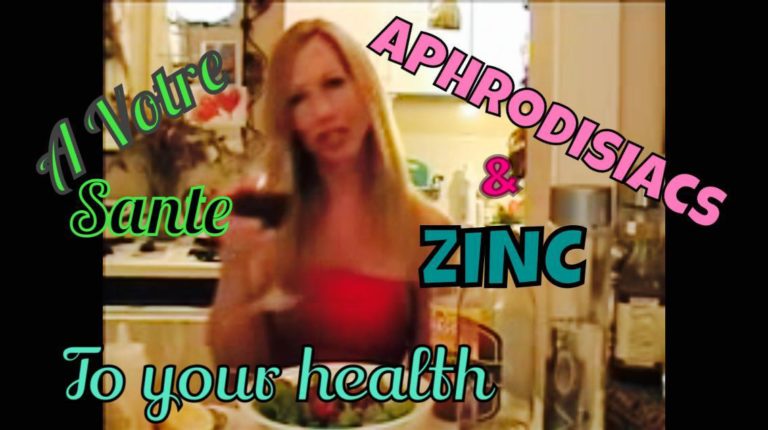“The Rest of the Story” about omega-3 fats by Elizabeth Brown, MS, RD
 Burlington Soon you will know the rest of the story…In last week’s article you learned some facts about flax, but you only learned half of the omega-3 fat story. Read on to learn “the rest of the story.”
Burlington Soon you will know the rest of the story…In last week’s article you learned some facts about flax, but you only learned half of the omega-3 fat story. Read on to learn “the rest of the story.”
As a child I remember listening to a guy named Paul Harvey who did a radio news segment called “The Rest of the Story” where he elaborated on popular news pieces.
We had a radio that went on with the bathroom light. I would listen to Paul Harvey’s commentary and would often find myself lingering in the bathroom just long enough to hear “the rest of the story.” Paul was on the radio for more than 50 years, up until his death this year at the age of 90. So, in honor of Paul Harvey, I will tell you “the rest of the story” about omega-3 fats.
Omega-3’s have garnered much media attention because each day we learn more about their amazing health benefits.
What researchers are finding is that a long standing lack of omega-3’s or an overabundance of omega-6’s in the diet may be the cause of chronic disease which is rooted in inflammation. Omega-6’s promote inflammation while omega-3 fats promote anti-inflammatory pathways.
But omega-3’s and omega-6’s are essential. We can not make them in the body; therefore, we must obtain them from the diet. Linoleic acid (LA) is the essential omega-6 fat and alpha-linolenic acid (ALA) is the essential omega-3 fatty acid.
Over the years, our diets have changed from whole foods to processed foods which incorporate more omega-6’s. We eat fewer vegetables and more meat from animals that were raised on grains instead of their natural diet of green grasses. Invariably we now get more omega-6’s and fewer omega-3 fats in our diets.
LA and ALA are the precursors to fats made by our bodies that are key ingredients in the function of cell membranes and in facilitating the body’s pro and anti-inflammatory pathways. LA and ALA compete for the same enzyme that converts them to their longer, more useable forms. LA gets converted to Arachidonic Acid (AA) while ALA gets converted to Eicospentaenoic Acid (EPA) which can further be converted to Docosahexaenoic Acid (DHA).
Ideally, EPA and DHA get incorporated into cell membranes instead of AA. The presence of these omega-3 fats in cell membranes allows for quick delivery of nutrients in and out of cells while keeping unwanted substances at bay. DHA, in particular, is found in highest concentrations in cells where rapid response is imperative such as in cells of the brain, the eyes, the heart, red blood cells and the muscles of trained athletes. EPA influences metabolic pathways which reduce blood clots, constriction of blood vessels and inflammation.
So a diet rich in omega-3 fats, as you can see, will promote a more healthful, better-functioning you. While a diet high in omega-6 fats will promote dis-ease and discomfort.
Most of the emphasis on omega-3 fats has been on getting more EPA and DHA either from seafood, especially cold water fish, or from fish oil supplements even though plant based foods contain ALA, the mother of EPA and DHA.
One reason for the seafood recommendations is that by eating it we are assured of getting adequate EPA and DHA. Four ounces of Chinook salmon has 2,090 mg of a combination of EPA and DHA. The recommended intake per day is 220 mg each of EPA and DHA, while the recommended intake of ALA is 2,200 mg.
More ALA is recommended because the rate of conversion of ALA to EPA and DHA is limited to five to ten percent at most, but it could be as low as zero percent. It all has to do with the availability of that enzyme that converts the omega-6 fat LA to AA or converts ALA to EPA and DHA. The more omega-6’s in the diet the harder it is for the enzyme to favor ALA conversion.
I was explaining this story to a client who said, “Wouldn’t it be easier to just take a supplement?” And I said, “Yes, in the short term but in the long run, we must work to correct a long-term problem.” If we ideally cut back on omega-6 sources from processed foods, then we will replace these foods with beneficial, whole foods naturally rich in omega-3 fats.
A long-term solution to improve quality of life is to eat more green vegetables which contain 100 to 300 mg ALA per cup. Strawberries and raspberries contain 120 mg per cup. Walnuts have 2,200 mg per 1/4 cup. Tofu, 360 mg ALA per four ounces. Cod, halibut, snapper, shrimp and scallops contain 300 to 600 mg EPA and DHA per four ounces. It all adds up to a better you through better food.
Next week I will give you some simple yet tasty solutions for eating your omega-3’s each and every day! 800 words just aren’t enough to completely tell “the rest of the story.”
To learn more about Omega-3 fats, please see my video entitled: “Eat2Liv: Omega-3 Fats” found on my You Tube channel http://www.youtube.com/user/KitchenScienceVixen


One Comment
Comments are closed.